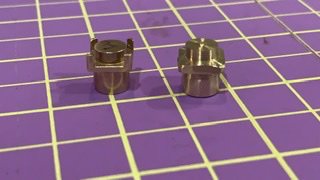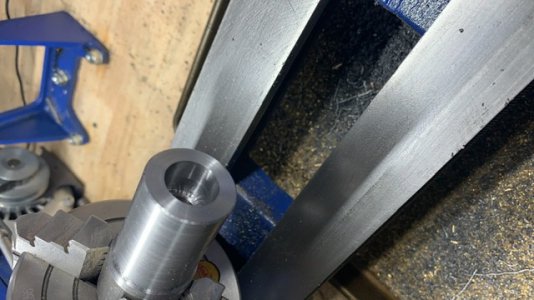- Joined
- Jul 31, 2020
- Messages
- 765
The tool which is used to check whether your threading tool (or threads) are at 60 degrees is called a fish. It is only about 1.5 inches long, and is typically about 1/16th thick. With the 60 degree V slot on one end, and a point on the other, looks a bit like a fish.I'll bite, what is the fish method?
You put the fish up against the side of a rod which is chucked up in the lathe, you crank your cross feed towards the rod until it presses against the
fish. If your tool is set too low, it will make the top of the fish tilt back towards you. If your tool is too high, the top will tilt away from you. If your tool height is spot on, the fish will remain perfectly vertical.
In this video, the demonstrator uses a small steel rule in the same fashion, rather than a fish, but the results are the same.


